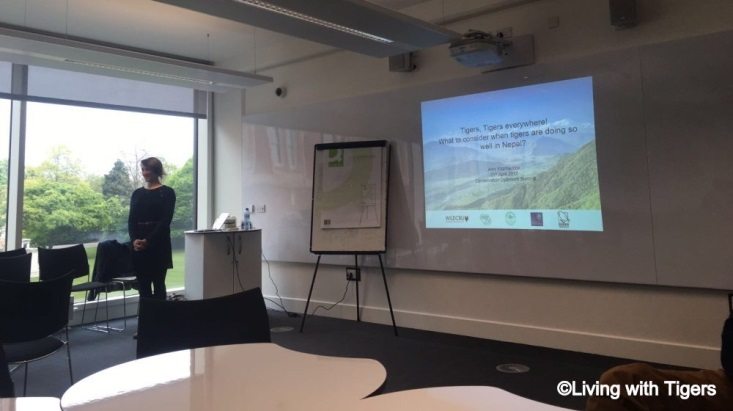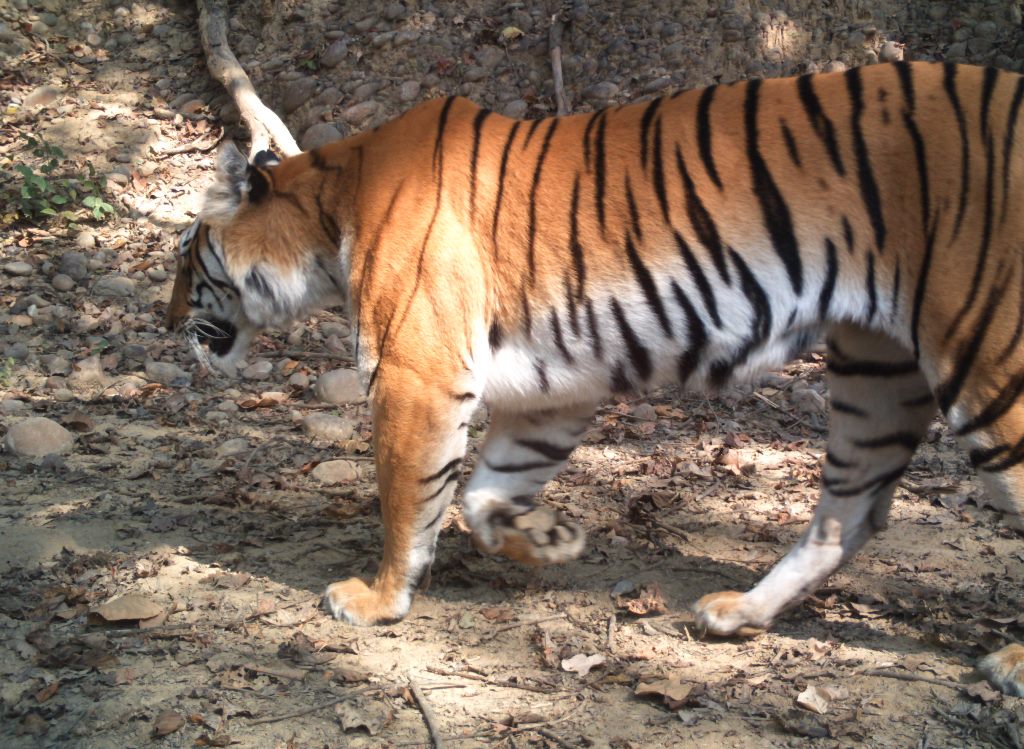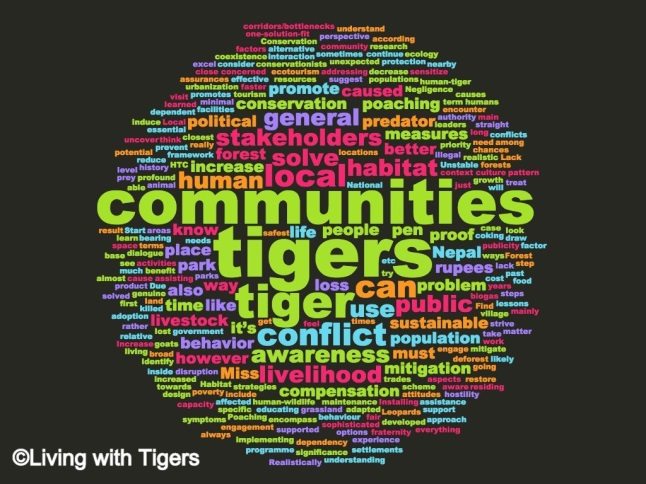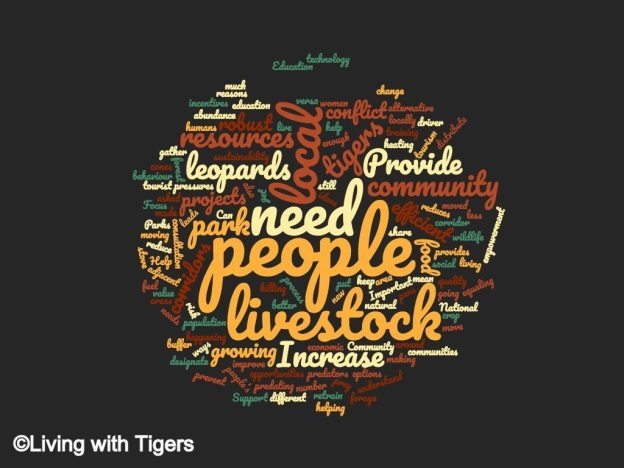Amy Fitzmaurice ran a workshop at the recent Conservation Optimism Summit to discuss human-felid conflict and its potential solutions with the participants. Below she shares what she covered in the workshop; an overview of the research she’s been carrying out to help protect people and tigers from conflict.

“The workshop called Tigers, Tigers, everywhere! What to consider when tigers are doing so well in Nepal? started by defining the meaning of human-felid conflicts. The term could be defined as ‘an incident between humans and felids in any environment that may or may not lead to injuries or fatalities of humans, human’s livestock or wild animals, like tigers and leopards.’

“However, in order to understand what the conflict means to different people I had asked beforehand people from around the world the following question: ‘How would you solve human-tiger conflict in Nepal?’
“We asked conservationists, social scientists, wildlife trackers, livestock farmers and many others. The word cloud below shows that, for many people, the word ‘communities’ was very much seen as a key aspect to solve this problem.”
“Word clouds were obtained by collecting all the answers to the question ‘How would you solve human-tiger conflict in Nepal?’ and by then putting them in a program able to turn them into a word cloud image. I think it’s an easy way to illustrate things when you’re talking to an audience that might not necessarily understand all the concepts that you’re talking about.

“All the quotes I collected during my research were used in discussion groups at the Summit to try creating solutions to human-felid conflict. These conflicts relate mainly to tigers and leopards killing livestock but can also include human-felid incidences, which can sadly lead to injuries or fatalities.
“A second word cloud was then created following the workshop and the word ‘people’ was at the centre of what participants thought was crucial to develop solutions.

“It’s interesting to see that generally the words ‘community’ and ‘people’ came out quite a lot! This is important because even though we are talking about tiger conservation, it can’t be achieved without further support of local people. Obviously having large carnivores can cause conflict with local people so it’s important that we always work with them to try and make sure that the local communities have what they need in life but also that we can help protect their local biodiversity.”
Some of the ideas that came out of the workshop to help solve human-felid conflict included:
- Increasing tourist value
- Understanding local people’s needs
- Focusing on corridors between the National Parks
- Increasing the abundance of prey to reduce risk of predating on livestock
- Increasing area for wildlife
- Providing alternative ways to gather resources
- Providing move efficient stove technology to prevent the need for so much fuel wood
- Support community driver incentives to change behaviour that leads to conflict
- Developing more efficient crop growing to reduce the need to forage
- Empowering women to help with population pressures
- Providing community training opportunities
- Consulting with local communities to get their ideas
“We as wildlife conservationists need to communicate and work with local people at the start of any project to understand their perspectives, needs and tolerances towards wildlife and help them solve their human-wildlife conflicts together.”
Read more from Amy and her work with the Living with Tigers project, here.